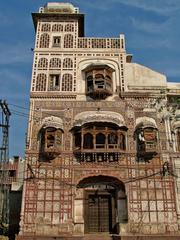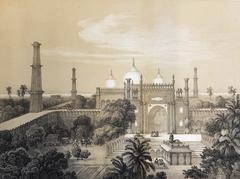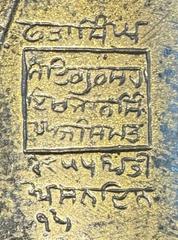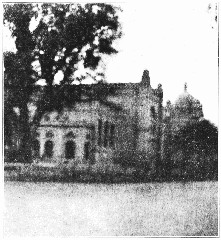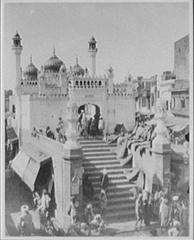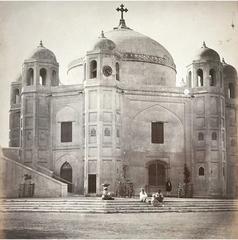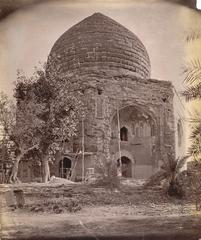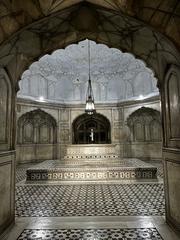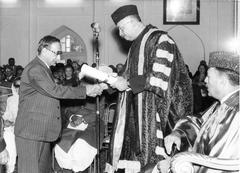
Shaheed Ganj Mosque Lahore: Visiting Hours, Tickets, and Historical Information
Date: 03/07/2025
Introduction
Shaheed Ganj, located in the heart of Lahore, Pakistan, stands as a powerful testament to the city’s layered religious, cultural, and political history. The complex, which includes the site of the former Shaheed Ganj Mosque and the adjoining Gurdwara Shaheed Ganj, encapsulates centuries of shifting identities and profound historical events. For visitors, Shaheed Ganj offers a unique opportunity to explore the intersection of Mughal, Sikh, and colonial legacies—a microcosm of Lahore’s broader heritage.
This guide provides a detailed overview of Shaheed Ganj’s origins, transformation through different eras, practical visitor information, and tips for exploring nearby landmarks. Whether you are a history enthusiast, a pilgrim, or a traveler eager to experience Lahore’s living traditions, this article will help you plan a respectful and memorable visit (e-a-a.com; Wikipedia; pakyatra.com).
Table of Contents
- Introduction
- Origins and Early History
- Sikh Rule and Transformation
- Colonial Era Disputes and Demolition
- Post-Partition Era and Current Status
- Visiting Shaheed Ganj: Practical Information
- Nearby Attractions
- FAQs
- Conclusion
- References
Origins and Early History
The history of Shaheed Ganj dates back to the Mughal period. The mosque, originally known as the Abdullah Khan Mosque, was constructed around 1753 by Abdullah Khan, a former cook of Dara Shikoh and later Lahore’s city magistrate. The site soon gained additional significance due to the martyrdom of Bhai Taru Singh, a revered Sikh, who was executed nearby in 1745. The area became known as Shaheed Ganj (“Martyrs’ Place”), and a gurdwara was subsequently established to honor Sikh martyrs (e-a-a.com).
Sikh Rule and Transformation
Following the Sikh conquest of Lahore in the late 18th century, the mosque ceased to function as a Muslim place of worship. The Sikh community established the Gurdwara Shaheed Ganj Bhai Taru Singh on the same grounds, commemorating the Sikh martyrs. The proximity of the mosque and gurdwara led to overlapping religious claims and set the stage for future disputes over ownership (Wikipedia).
Colonial Era Disputes and Demolition
Under British colonial rule, Shaheed Ganj became a flashpoint for communal tensions. Muslim groups sought to reclaim the mosque, but the courts—including the Privy Council in London—consistently ruled in favor of the Sikh community, citing continuous possession of the site. In July 1935, the Shiromani Gurdwara Parbandhak Committee demolished the mosque, an act that led to widespread protests, civil disobedience, and heightened religious tensions across Punjab. The event remains a significant chapter in Lahore’s religious and political history (e-a-a.com; Wikipedia).
Post-Partition Era and Current Status
After the partition of India in 1947, Lahore’s Sikh population dwindled, and the Evacuee Trust Property Board (ETPB) assumed responsibility for the site’s management. The original mosque no longer stands, but the Gurdwara Shaheed Singh Singhnian remains a place of pilgrimage for Sikhs. Today, the site is recognized for both its spiritual significance and its emblematic role in Lahore’s complex heritage. Occasional disputes continue regarding the exact location and preservation of the site, but it is maintained as a key symbol of Sikh history in Pakistan (pakyatra.com).
Visiting Shaheed Ganj: Practical Information
Visiting Hours
- Gurdwara Shaheed Ganj: Open daily from early morning (approx. 6:00 AM) until evening (approx. 8:00 PM).
- General Advice: Visit during daylight hours for safety and to fully appreciate the site.
Entry and Tickets
- Entry Fee: There is no entry fee for the gurdwara or the surrounding historic sites.
- Donations: Voluntary donations for site upkeep are welcomed but not mandatory.
Accessibility and Facilities
- Location: Situated in Naulakha (Landa) Bazaar, near Lahore’s Walled City and major landmarks.
- Transport: Reachable by taxi, rickshaw, or on foot from central Lahore. Public transport stops such as Bhatti Chowk are nearby.
- Facilities: Basic amenities are available, including restrooms and a modest langar (community kitchen) offering vegetarian meals to all visitors.
- Accessibility: The site’s historic setting means limited wheelchair access; uneven pavements and narrow lanes may pose challenges for those with mobility issues.
Travel Tips and Visitor Etiquette
- Dress Code: Modest attire is required. Men should wear long trousers; women must cover their heads and wear long sleeves and loose garments.
- Footwear: Shoes must be removed before entering the prayer area.
- Photography: Permitted in exterior and courtyard areas; always seek permission before photographing individuals or ceremonies.
- Behavior: Maintain silence and respect during prayers. Non-Sikhs and non-Muslims are welcome but should avoid entering the prayer hall during religious services.
- Special Permits: Foreign visitors, especially those of Indian origin, may require special permits to visit Sikh shrines in Pakistan. Check with the Pakistan High Commission or local Sikh organizations before travel (apricottours.pk).
Nearby Attractions
- Lahore Fort: UNESCO World Heritage Site with centuries of Mughal history.
- Badshahi Mosque: Iconic Mughal-era mosque, a short walk from Shaheed Ganj.
- Naulakha Bazaar & Shah Alam Market: Bustling markets offering traditional crafts, textiles, and local cuisine.
- Shrine of Pir Shah Kaku: Adjacent spiritual site with its own rich history.
Frequently Asked Questions (FAQ)
Q: Is the original Shaheed Ganj Mosque still standing?
A: The mosque was demolished in 1935. Today, the site is occupied by the Gurdwara Shaheed Ganj Bhai Taru Singh.
Q: Are there any entry fees?
A: No, entry to the gurdwara and surrounding historical area is free.
Q: What are the recommended visiting hours?
A: Early morning or late afternoon is ideal to avoid crowds and experience the site in cooler weather.
Q: How can I reach Shaheed Ganj?
A: The site is accessible via taxi, rickshaw, and public transport. It is centrally located near major Lahore landmarks.
Q: Are guided tours available?
A: Formal guided tours are limited, but local Sikh custodians and some tour operators offer historical insights upon request.
Q: Is the site accessible for differently-abled visitors?
A: Accessibility is limited due to the historic setting and lack of ramps.
Conclusion
Shaheed Ganj stands as a living testament to Lahore’s vibrant and sometimes turbulent history, reflecting narratives of faith, sacrifice, and coexistence. Its evolution from a Mughal-era mosque to a Sikh gurdwara, the site’s role in colonial legal battles, and its present-day status as a heritage landmark offer visitors a rich tapestry of stories. Respectful exploration of Shaheed Ganj, along with visits to nearby attractions, will deepen your understanding of Lahore’s cultural legacy.
For more travel tips, historical guides, and updates on heritage sites in Lahore, download the Audiala app and follow us on social media.
References and Further Reading
- Shaheed Ganj Lahore: History, Visiting Hours, Tickets, and Cultural Significance – e-a-a.com
- Shaheed Ganj Mosque – Wikipedia
- Gurdwara Shaheed Ganj: Visiting Hours, History, and Guide – pakyatra.com
- Laure Wanders’ Travel Guide
- Shrines in Lahore – Guide to Lahore
- Gurdwaras in Lahore – Apricot Tours
- Current Happenings at Gurudwara Shaheed Ganj – SikhNet
- Lahore’s Shaheed Ganj Masjid Issue – New Age Islam
- Gurdwara Shahid Ganj Singh Singhania – Trek Zone
















